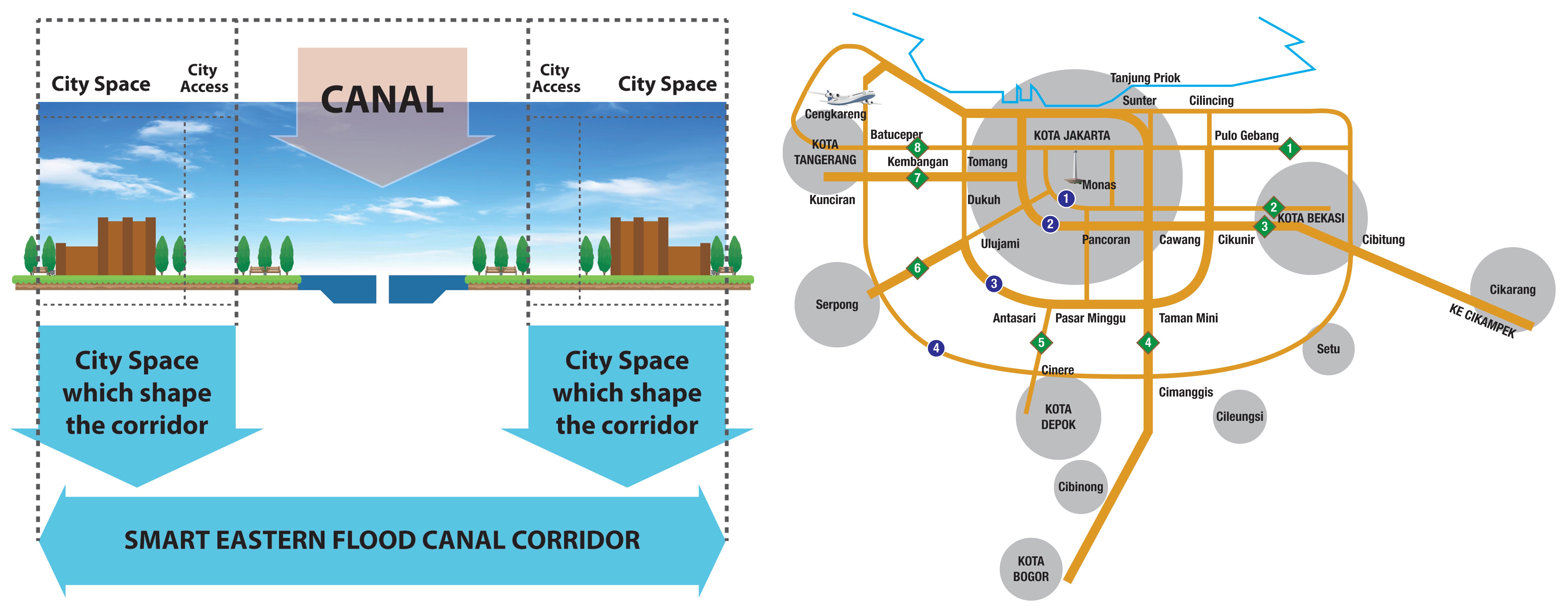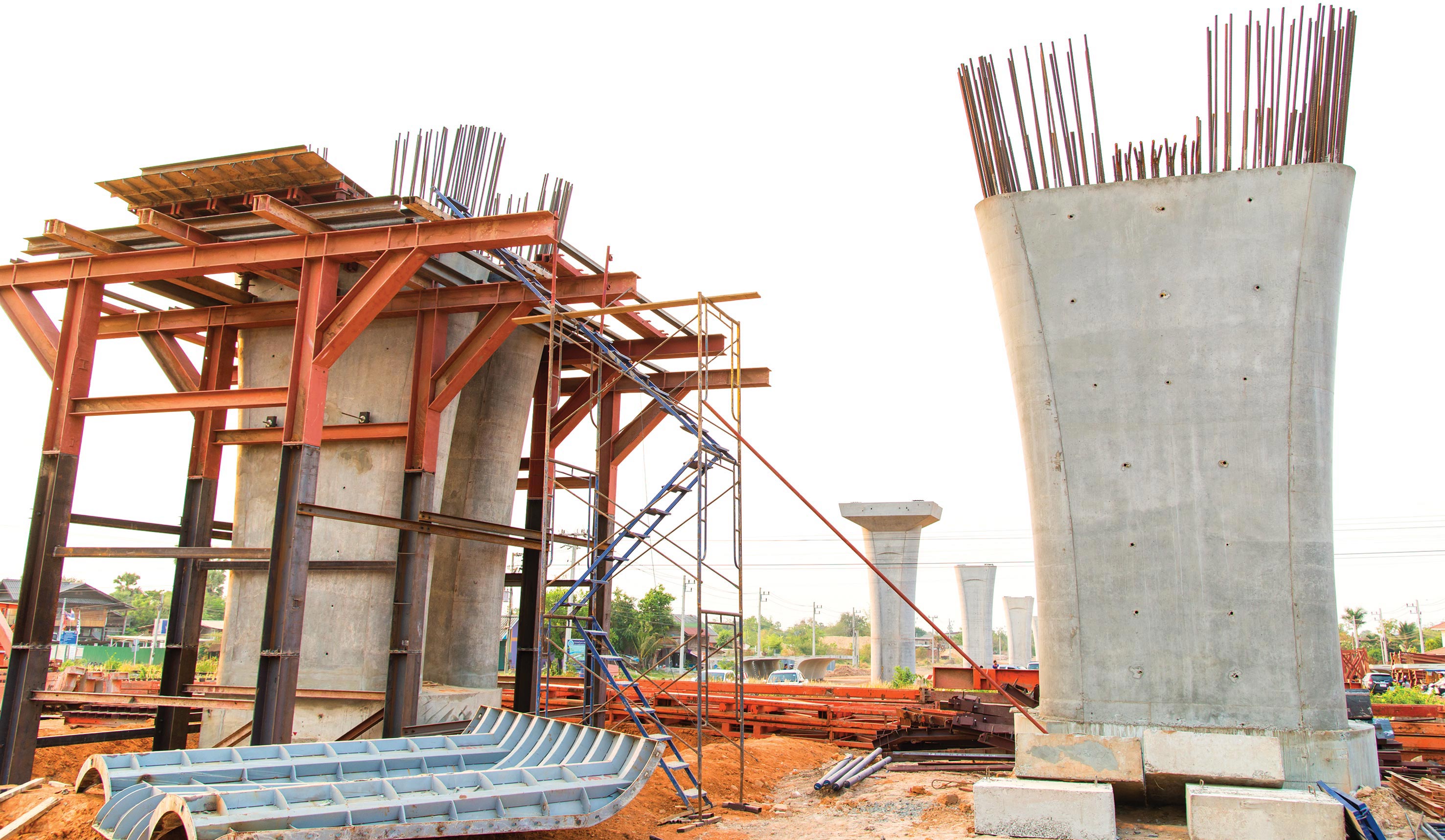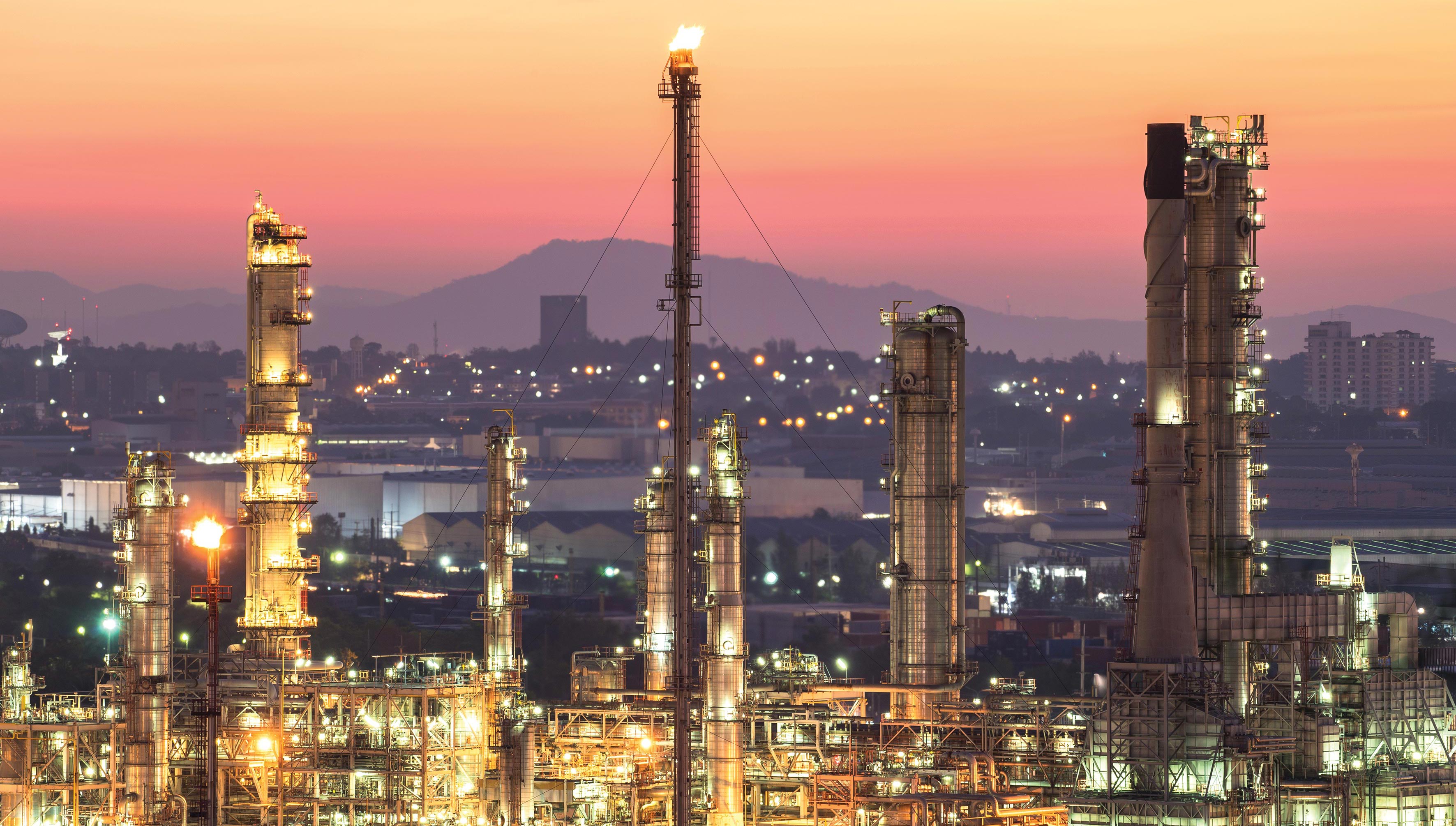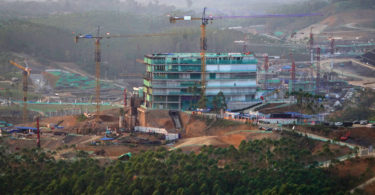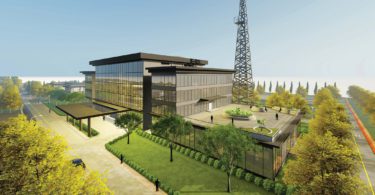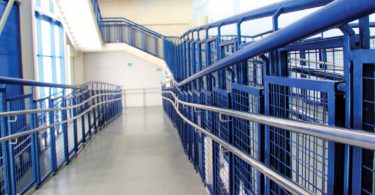Declining liveability in rapidly growing metropolitan areas underline the increasing demand for infrastructure, better environment and improved quality of life.
Cities in Indonesia contribute 74 per cent of the national Gross Domestic Product (GDP), therefore, they are very important engines of economic growth for us. However, as experienced by several developing countries transitioning into developed nations, Indonesia faces the challenge of massive urban population growth within the past four decades (from 1970 to 2010)—a six-fold increase from 20 million (17 per cent of total population) to 120 million (50 per cent) —it’s expected to more than double by 2050.
URBAN CHALLENGES
The Greater Jakarta urban sprawl reaches approximately 50 kilometres to the east, 40 kilometres to the west, and 30 kilometres to the south. This has resulted in a wider city and longer commutes, with traffic volume in the eastern and western corridors exceeding 200,000 vehicles a day. Castrol’s Magnatec Stop-Start index revealed that Jakarta experienced the most number of stop-starts per kilometre, followed by Istanbul, Mexico City and Surabaya. Bottlenecks mean higher fuel energy consumption, higher air pollution and vehicle operating costs.
While cities and human settlements have faced improvements in terms of infrastructure accessibility and quality of life, significant challenges remain. Insufficient affordable housing to meet demand caused results in wider slum areas and shortage of clean water and sanitation.
Settlements along the main river floodplain lower the river’s capacity and water quality, causing frequent flooding, particularly during the wet season. Other cities, such as those along the western seashore of Sumatra island, are within the tectonic zone and prone to disaster.
This illustration of declining liveability in rapidly growing metropolitan areas underline the increasing demand for infrastructure—basic services, food security, housing, health, decent jobs and green spaces. Therefore, the central and local governments are working hard to put infrastructure development as top priority. We need to ensure that cities are well planned, financed, developed, governed and managed. We need to take advantage of state-of-the-art technology to improve our environment and quality of life.
SUSTAINABLE SMART CITIES
In response to the above-mentioned urban challenges, sustainable smart cities need to be developed, along with their goals and standard of services. This is in line with the development approach to focus on 35 Strategic Development Regions as a basis for integrated infrastructure development planning of public works and housing infrastructure.
Sustainable smart cities will be achieved when cities comply with the requirements of the four pillars of sustainable smartness—governance and community, livelihood, economy and environment. Components supporting these four pillars include smart planning and design, smart community, smart public spaces, smart water management, smart waste management, smart transportation, smart building and construction, and smart energy.
SUSTAINABLE SMART GOVERNANCE AND COMMUNITY
The essence of smart governance is applying technology to facilitate and support better planning and design, whereas smart community synergises technology with residents to increase community participation and communication. Smart planning and design are formulated into the master plan, zoning regulations and design of cities.
We have learned from references, such as the Eastern Regional Organisation for Planning and Human Settlements (EAROPH) World Congress in Jakarta, as well as from several overseas visits to explore various applications of smart cities—Melbourne’s coordinated area traffic system; Vancouver’s good arrangement of green open spaces; Curitiba’s increased recycling efforts through citizen incentives, management of storm water and operation of busways; Singapore’s automatic congestion pricing and London’s surcharge levy for single occupancy; and Barcelona’s solar energy promotions.
The existence of cyber-physical system technology opens wide opportunities to other developments, considering its ability to process high complexity and to connect all things together. Several cities, supported by the central government, have begun using sensors, closed-circuit television (CCTV), radio-frequency identification (RFID), global positioning system (GPS), geographic information system (GIS) and mobile gadgets to support inter-connection among elements of the built-environment and communities, with real-time analysis, processing and monitoring.
For example, the Jakarta Smart City Lounge includes a high-tech command centre that integrates the needs of the city government and the general public, with the aim of increasing public participation in the city’s development. The use of apps, such as Qlue, allow residents to lodge complaints and for city leaders to respond to them.
SUSTAINABLE SMART LIVELIHOOD
Smart livelihood is about quality of life, in terms of security, health, safety, and green open spaces for adequate oxygen citywide, as stipulated in the Spatial Planning Law No. 26 Year 2007.
Smart public spaces have been partially implemented by many cities in Indonesia, through facilitation of 112 cities/regents by the Ministry of Public Works. Each city develops or improves their parks to suit their local needs, whether for social gathering, economic purposes or aesthetics. The government of Jakarta, for example, opened fences of buildings along main protocol roads, such as Thamrin, to increase public green spaces.
In cooperation with the French government, eco district as a planning approach has been implemented in seven cities, namely Bandung, Mataram, Yogyakarta, Singkawang, Wonosobo, Semarang and Metro Lampung. SymbioCity has also been implemented in some cities in cooperation with the government of Sweden.
Various water infrastructures have been and are being built, such as the Ciawi regulating dam at the Ciliwung river of Bogor, the widening and construction of dikes, and the 23.5-kilometre eastern flood canal and tunnel connecting the western flood canal (Ciliwung river) to the eastern flood canal. Within the city, the drainage system is being improved to ensure rain water flows smoothly into the canal and river with the installation of polder and pumps.
Sensors have been installed in the rivers and, together with rainfall information from satellites, assessments are made to monitor and broadcast possible flooding. Several properties have implemented water harvesting to counter the shortage of clean water in Jakarta since most of the city’s raw water is supplied from the Jatiluhur dam of West Java and from ground water, which results in land subsidence, particularly in the north of Jakarta. The planned sea defence as flood disaster relief and as an estuary dam is planned to fill the gap of raw water shortage.
Meanwhile, the new eastern flood canal is being developed further as a showcase for Green infrastructure with flood control, water conservation, green open space corridor, tourism, cycling track, commercial area, as well as planned water transportation and pier. As stipulated in the zoning plan, all canal-facing buildings require smart waste management systems. Purifying plants are also planted at the edge of tributaries entering the eastern flood canal, supported by several cleaner teams as part of the clean river programme. Sensors are installed in some garbage trucks to monitor and ensure that smart waste processing measures are undertaken.
In cities located in the seismic zones, the development permit must comply with the carrying capacity of the area for safety purposes. Some earthquake-resistant building constructions, such as the office of the Public Works and Housing of the city of Padang, use seismic isolator technology to reduce earthquake acceleration up to 62 per cent. This device functions as a passive protection on the structure to prevent the failure of the building’s foundations after an earthquake.
The development of infrastructure and building in cities are also taking into consideration aesthetics, in addition to function, such as the Suromadu Suspension Bridge in Surabaya, Pasopati Cable Stay Bridge in Bandung, and Combined Clover Leaf Bridge of Semanggi in Jakarta. These are designed in harmony with the natural environment and the residents to form the city landscape. Some heritage buildings are also being preserved as tourist destinations, with some cities imposing restrictions for the preservation of the built environment.
SUSTAINABLE SMART ECONOMY
The use of technology in the economic process create more productive and efficient environments and businesses. Accordingly, about 40 per cent of a city’s built-up area should be allocated for economic activities.
Roads should cover more than 20 per cent of the city area for adequate urban mobility. There should be a clear distinction between primary roads, for serving regional traffic, and secondary roads, for serving internal city’s traffic, for proper integration between land use and transport infrastructure. Since most metropolitan and big cities in Indonesia experience mixed traffic, therefore, it is typical to develop bypasses in the form of ring and radial roads or expressways.
In Jakarta, the road ratio is presently about 7 per cent of the city area, significantly lower than the requirements. Under road network modernisation for smart urban mobility and regional and long-distance journeys, toll roads and expressways are being constructed to cover four ring roads and eight radial roads, as part of a supporting network of cities within the strategic development regions.
This aids in directing regional development of greater Jakarta to the eastern and western regions, as well as to support satellite cities of Bogor, Depok, Tangerang and Bekasi. In fact, the network has attracted and supported the formation of new cities—such as Lippo Karawaci, Citra Raya, Tigaraksa, Modern and Alam Sutera in the west region; Bintaro, Gading Serpong and Bumi Serpong Damai (BSD) in the south-west region; Kota Wisata, Telaga Kahuripan and Kota Sentul in the south region; and Cikarang, Lippo Cikarang, Kota Legenda, Taman Metropolitan, Kota Baru Cikarang, and Citra Indah—to meet the fast-growing demand of housing by officials and labours in the many new industrial areas.
The growth of the new BSD city in about 6,000 hectares of land is improving in terms of spatial management and the availability of jobs in the surrounding areas, which reduces commuters to the Jakarta city centre. Many office buildings are also presently developing along the outer ring roads, shifting from the CBD along Thamrin and Monas.
The biggest industrial zone of Cikarang has experienced severe congestion, even for travellers from Bandung to Jakarta, and the government has responded by widening toll roads, providing direct access to the dry port in Jababeka, speeding up the development of toll roads to Cibitung and Cilincing, developing the double-track railway from Cikarang to Tanjung Priok and the development canals from Cikarang and Bekasi Laut or Tanjung Priok.
The government is also promoting the development of the new 10,000-hectare public city Maja in the western region, in cooperation with developers. This includes the preparation of the master plan and the construction of a 58-kilometre access road from Pamulang to Maja, with developers undertaking the road lands and the building of low, medium and premium housing based on a 3:2:1 ratio.
The most inner ring road, in the form of six sections of elevated toll roads with a total of 70 kilometres, is designed to have one lane dedicated for busways and supported by transit oriented development (TOD) in some locations, such as in Dukuh Atas (cross section with MRT, railway, busway and office-retail areas). Public transportation is being promoted to ease traffic congestion, with the construction of a mass rapid transit line in the north to south direction (elevated and underground) and light rail transit from south to north direction (practicing U-shape girder structure precast for acceleration and aesthetics).
Secondary roads are being constructed along rivers, whereas in some congested main intersections, including the Semanggi interchange, roads have been widened with additional elevated ramps to further increase capacity using ARC precast concrete.
The use of smart building and construction methods, such as the application of precast concrete and carbon nanofiber, reduces construction time, with better quality and aesthetics, improved safety and less impact on traffic. Road infrastructure capacities are improved with automatic area traffic control, information system in the toll roads, as well as electronic toll, which is planned to be improved further by using RFID for non-stopping traffic flow at the toll booths.
SUSTAINABLE SMART ENVIRONMENT
This pillar ensures that the environment within a city is ecologically sustainable, with good management of its natural resources. Urbanisation is contributing to an annual increase of more than 8 per cent in energy demand, and the government is in the progress of adding 35,000 megawatts in supply. The challenge is to provide transmission across the archipelago and to develop a smart grid to save fossil fuel and promote renewable energy (solar and hydro power) and implement efficient use of energy.
Solar energy has been harvested and combined with power from the State Electricity Company (Perusahaan Listrik Negara or PLN), while energy-efficient LED street lighting has been retrofitted in Jakarta, with controls to dim lights at certain periods.
With increasing commuting time due to the urban sprawl, the demand for compact cities or superblocks in the city centres has become higher, especially for buildings that facilitate the integration of home, office, retail, recreation and even education, as they save considerable time, activity cost and energy. However, as most superblocks provide expensive housings, the government is presently constructing the superblocks in Kemayoran; initially catering for Asian Games athletes, these accommodations can later be allocated to low-income residents.
Dr. Ir. A. Hermanto Dardak, M.Sc
President of the Institution of Engineers Indonesia; Senior Widyaiswara, Ministry of Public Works and Housing (ex-Vice Minister of Public Works &
ex-President of EAROPH)
A. Hermanto Dardak graduated from the school of Civil Engineering, Bandung Institute of Technology, in 1980. Then, he obtained Master degree (1985) and Doctoral degree (1990) from the University of New South Wales, Sydney, Australia. He joined the Ministry of Public Works in 1980, and he has been assigned the Director of Planning (1998), Director General of Spatial Planning (2005), Director General of Highways (2007), Vice Minister of Public Works (2009-2014), Head of Infrastructure Development Board (2015). and presently as Senior Widyaiswara in the Ministry of Public Works and Housing and also as President of the Institution of Engineers, Indonesia (PII – Persatuan Insinyur Indonesia).
He has been assigned as President of Road Engineering Association of Asia-Australasia (REAAA), President of Eastern Region Organisation of Planning and Housing (EAROPH) and Chairman of Road Development Association (HPJI). He received several awards, among others Bintang Mahaputera Utama (2014), Profesional of the Year Award IRF (2014), Distinguished Alumni Award, Australia (2009) and Legacy Award IAP (2007) and Satyalancana Pembangunan (2009).

 Malaysia
Malaysia Hong Kong
Hong Kong Singapore
Singapore Tiếng Việt
Tiếng Việt ประเทศไทย
ประเทศไทย

